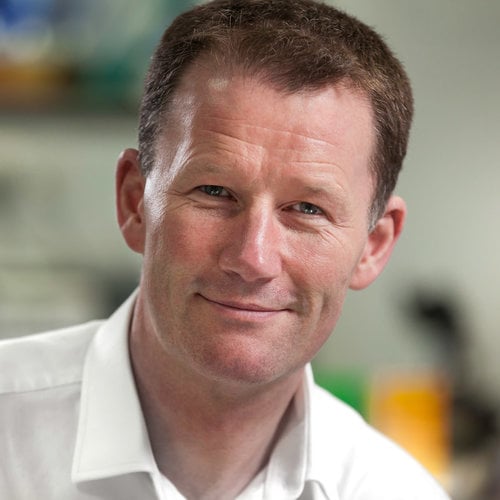Shaping the Future for Women in STEM: What Can We Do Better?
Times are changing but it is still very common across STEM industries to be the only woman in the room, especially in more senior forums. This means that there are fewer role models and mentors that understand your position. There are also organizational blind spots and a sense that there is less room for women to grow into."Yael Ben Dov Head of Design, Synthace
Science, Technology, Engineering, and Mathematics (STEM) is an exciting and important sector spanning both industry and academia. It relies on cutting-edge R&D and manufacturing, aiming to change the world for the better. However, the sector still lacks diversity as some groups remain under-represented.
As a software company at the intersection of biotech and automation, we believe it is crucial to recognize and address these issues. We are continuously working towards creating an inclusive and diverse environment for our team while bringing our customers and partners along on our journey.
To celebrate the International Day of Women and Girls in Science, we chatted with some of our colleagues at Synthace about their personal experiences as women in STEM. We asked them about their career journey, the barriers that women encounter, and what improvements need to be made to enable more women to work in the STEM sectors.
What motivated you to choose a career in STEM and what was your journey like?

Mingke Pan, MSc
Business Analytics & Operations Executive
Mingke holds a BSc degree in Biology and an MSc degree in Cellular and Molecular Biology from Imperial College London. She has previously worked as a Project Manager at Imperial Consulting Group and Relationship Manager at Kairos Society Europe. She has also undertaken an R&D industrial placement at GSK and an internship at Green Pine Capital Partners. In October 2019, Mingke joined Synthace as Business Analytics & Operations Executive.
“I have been interested in STEM since high school, especially in the complexity of biological systems and ecosystem diversity. At university, I had become increasingly interested in new innovations and how biotechnologies could change our society in a way never imagined before.
Through my placement at GSK, I gained exposure to R&D and the pipeline of drug development. It excites me to think about harnessing the power of biology to produce pioneer drugs and to cure complicated diseases. I strongly believe that ‘bio and tech will eat the world’".

Yael Ben Dov, MSc
Head of Design
Yael has completed the Marc Rich Arts and Humanities Excellence Program (BA) at Tel Aviv University, followed by an MSc in Human Centred Systems at City University London. Her previous roles include Lead UX Architect at Rhizi and Ariel Eshel, Senior UX Designer at Thomsons Online Benefits, Lead UX Manager at Fidelity International, and Head of Service Design at Railsbank. She joined Synthace in September 2019 as Head of Design.
“I didn’t choose a career in STEM as I was never very technical and thought these jobs are out of reach. I was interested in people and ideas, I liked creating things, and was naturally drawn to art and design.
I wanted to work in interesting fields, designing impactful products and looked for where I could do that. Tech was the obvious choice: it’s all around us, facing humanity’s most difficult and fascinating problems! Bringing my fascination with people into problem-solving was a natural fit.”

Sybil Wong, PhD
Director, Strategic Partnerships
Sybil completed her PhD in Biochemistry at the University of Nottingham and the Barts Cancer Institute in London, after a BSc in Biochemistry and Economics at the University of Hong Kong. She joined Synthace in May 2019 as Director of Strategic Partnerships. She is no stranger to building scientific companies, having been COO at Sparrho and SVP Business Development at the Oxbridge Biotech Roundtable.
"The driving force for me has always been the desire to know for certain that I’m contributing to a bigger cause. As a biochemist, I felt I contributed to a better understanding of how our cells work, which would eventually translate into better treatments and diagnostics for patients. Now at Synthace, I’m combining my research and start-up experience to help grow a company that can completely transform how biology is done.”
Is there a lack of women in STEM sectors?
According to Mingke, the women-to-men ratio in STEM depends on the industry and level of seniority, with higher positions seeing fewer women:
“In more traditional engineering industries, such as aeronautical engineering, there are fewer women in general. In life sciences-related industries, such as the pharmaceutical and biotech sectors, the women-to-men ratio is fairly decent at junior and middle levels. However, in most STEM industries, there is a lack of women in more senior positions and leadership teams.”
Indeed, if you look at the C-suite and board members of most biotech companies, you’ll most likely find far more men than women. In 2019, Nature Biotechnology reported 24.9% of women in senior management roles and 17.1% of women on boards of biotech companies [1].
In life sciences-related industries, such as pharmaceutical and biotech sectors, the women-to-men ratio is fairly decent at junior and middle levels. However, in most STEM industries, there is a lack of women in more senior positions and leadership teams.”Mingke Pan Business Analytics & Operations Executive
Yael expands on the under-representation at senior levels and explains its impact on younger women seeking a career in STEM:
“Times are changing but it is still very common across STEM industries to be the only woman in the room, especially in more senior forums. This means that there are fewer role models and mentors that understand your position. There are also organizational blind spots and a sense that there is less room for women to grow into.”
There’s still a lot of work to be done to improve the representation of women in STEM and beyond, although some progress has been made. Mingke explains:
“The ratio of women vs men in STEM is improving as more companies realize the importance of gender balance at work and how it could increase work efficiency.”
Are there barriers for women trying to get into STEM roles and how can we lower them?
“One of the biggest barriers is the traditional belief that men are “naturally” better at STEM subjects than women'' says Mingke. Whether expressed explicitly or implicitly, this deep-rooted misconception might make young women less confident in their ability to pursue STEM roles, especially the ones deemed more “technical”. Or, at the very least, it may discourage them from getting into STEM earlier in their education and career.
Yael reveals another layer to this problem – the barrier to entry for women in STEM can be reduced by improving their representation within the industry which can only be done by reducing the barrier to entry:
“It’s like a chicken and egg situation: women will have barriers to starting a career or getting promoted in STEM as long as there aren’t many women in STEM.
There are no formal or clear barriers, but there are many transparent and informal drop points we observe. It sounds silly but already having some women around, shaping the culture, exposing blind spots and effectively making room for others to follow, is the best way to open the gates and invite more women to enter the industry”.
Why would some people be put off by the idea of a career in STEM? What could be done to help?
While STEM is an exciting and important sector, some people may be reluctant to join it, regardless of their gender, thereby missing out on the opportunity to work on something revolutionary and make a positive change in the world.
Mingke reveals one important reason for this - STEM is often perceived as a difficult and extremely quantitative subject, which drives people away from pursuing education and career in it. She notes:
“It’s good to see that the situation is changing now, but to encourage more people to join STEM requires early exposure to and engagement in STEM activities for young people as well as the general improvement in education on the importance of the sector”.
If you’re passionate about a certain innovative industry, such as biotech, automation or cloud computing, your innate curiosity and passion for keeping up to date with the latest news can really help you stand out, regardless of your educational background."Sybil Wong Director, Strategic Partnerships
In addition, Sybil explains that those outside of the industry may not realize how relevant their skills and experience are to the STEM sector because it may seem that the only way to get in is to become certified in a related discipline. However, in reality, STEM companies like Synthace require a wide spectrum of skills and experience. Sybil advises:
“To help lower barriers to starting a career at a STEM company, employers could provide more opportunities for their staff to showcase what non-technical skills are valued in their roles. For example, commercial teams need people who like getting to grips with complex products and working out how to best present those to customers. Operations teams need problem solvers who can communicate with technical staff and implement what they need to do their jobs better.”
One of the hallmarks of the most exciting STEM companies is their culture of continuous learning. Sybil reveals what makes you a great fit for this sector:
“If you’re passionate about a certain innovative industry, such as biotech, automation or cloud computing, your innate curiosity and passion for keeping up to date with the latest news can really help you stand out, regardless of your educational background.”
What is Synthace doing to try to address the situation internally and create an equal, diverse, and inclusive environment?

Tim Fell
CEO
"Many barriers exist for women to pursue a STEM career and the world is a much poorer place because of that. Calling out obstacles is important but insufficient to overcome them alone. I encourage EVERYBODY to take positive action. Start by examining your own frame of reference and unconscious biases. What is reinforcing them, and what tangible steps can you take to challenge and change them?
At Synthace we are committed to improving diversity and equality. In addition to promoting and participating in activities to support women and girls to take up and build careers in STEM, we encourage the telling of personal stories, so we can all learn from each other’s diverse experiences.
Broadening our knowledge and understanding gives us power, the power to be bold, take action, and create a richer, more equal life for everybody, no matter who they are."

Mingke Pan
Business Analytics & Operations Executive
“Synthace is putting in efforts to create a diverse company - we have a good gender balance in the Lab and Commercial teams. We were the finalists for the ‘Best Employer for Flexible Working’ category in the Women in Tech Employer Awards 2020. To increase the opportunities for underrepresented communities, we have partnered with Women in Tech, the Black Young Professional Network, and Ada’s List.”

Yael Ben Dov
Head of Design
“Diversity is a part of Synthace’s DNA. We come from across the globe, speaking many languages, practising different faiths, loving whoever we love. But it’s always a work in progress, and I would love to see more women, especially women of colour, apply to all of our departments. Seriously, check out our careers page!”

Sybil Wong
Director, Strategic Partnerships
"Synthace has really taken advantage of being headquartered in London, UK, one of the world’s biggest cultural melting pots, to build a team that has diverse backgrounds and experiences. With so much variety in the team, we’ve formed a positive, inclusive culture organically - and as we doubled the team in the last 2 years, our Operations and Talent teams have done a stellar job to ensure that our unique culture is nurtured and evolves with each new brilliant hire.”


